Note: This blog post is the first in a series of four. You will find the links to the other posts here once they are published. Part 2 (The Quilting Process) / Part 3 (Quilt Cleaning) / Part 4 (The Finished Quilt)
When I was growing up, there was a quilt that was always in use around the house, and even came camping with us. It was blue and white, and it faded over the years, losing a lot of its contrast. It got softer and softer and softer, becoming the texture of a worn pillow case. It got stained with grease from being stored too close to our bikes when we went camping. An ember blew onto it, burning a hole straight through it. I brought it with me to another province when I went away to university, where it stayed on my twin bed for the full five years that I lived in that town. I always knew that my mum had made it before I was born, but it was an object so constant that it faded into the background. Growing up, my mum sewed a lot of clothes for me and my sister, but she was never a quilter. For a long time it never occurred to me to even picture my mum in the act of sewing it, let alone wondering when or why she’d made it. I want to show you that quilt and talk about its history, which is the prologue to a sewing journey I’ve been on for more than half of 2023.

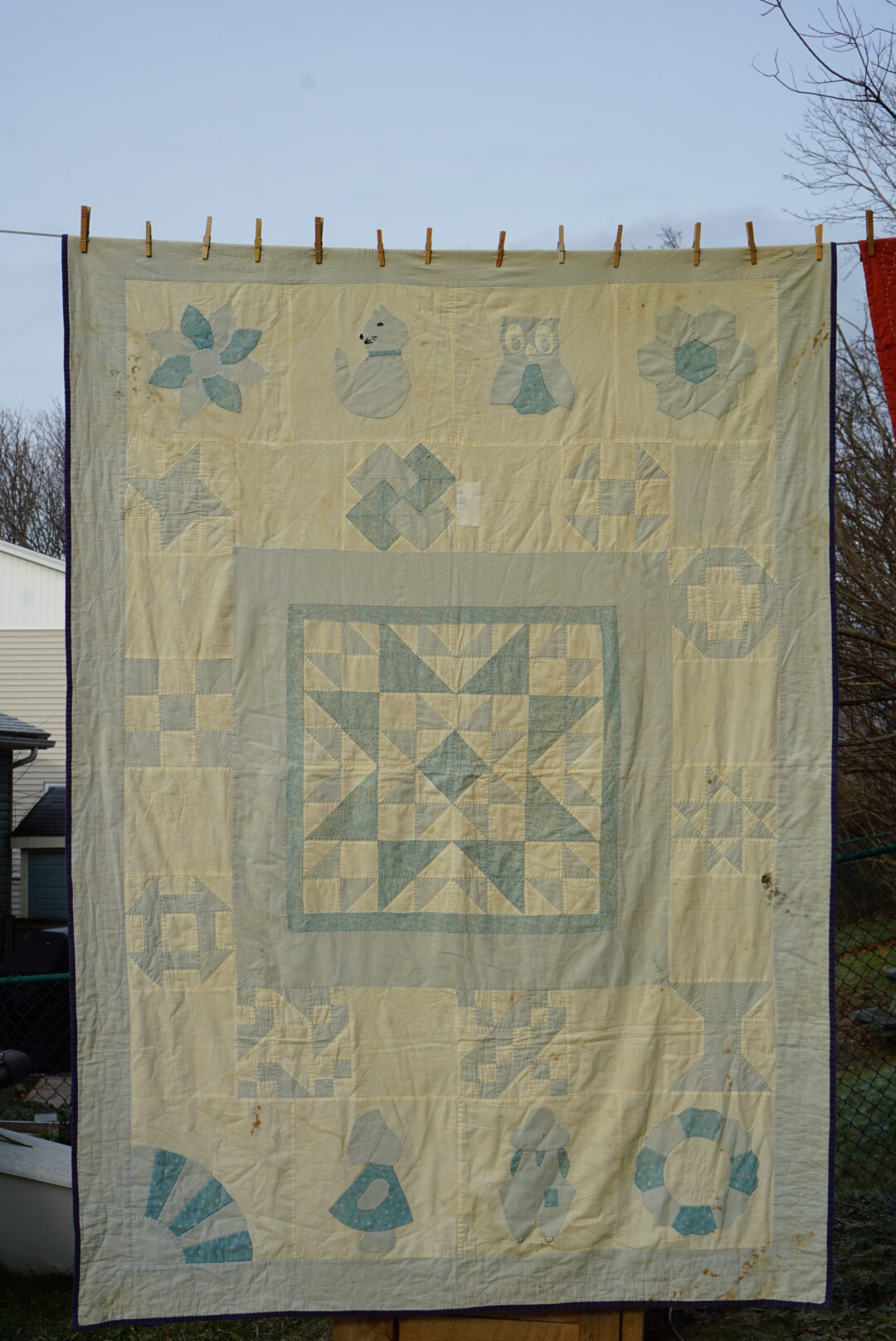
As you’ll see from the photo above, the quilt is a sampler quilt. I didn’t know that terminology or what that was until I was older, but as a kid I always loved that every block was different. I loved the little boy wearing overalls, the cat, the owl, and all of the little pieces in the blocks. Once I started sewing more seriously during my undergraduate degree, I realized that the whole quilt was hand-pieced and hand-quilted! I think it was around this time that I likely asked my mum about making the quilt, because the idea of hand-sewing an entire quilt seemed impossibly intense to me. If she told me a lot of details, they didn’t stick with me. What really registered was that she’d made it in a quilting class she took with my grandma (her mother) when she was in university, basically the same age as I was at the time. This gave me a new appreciation for this already beloved object, and I also started to notice how much wear and tear it had sustained over the years. Below, you’ll see the grease, stains, and ember hole that I mentioned earlier as well as some of the signs of wear.

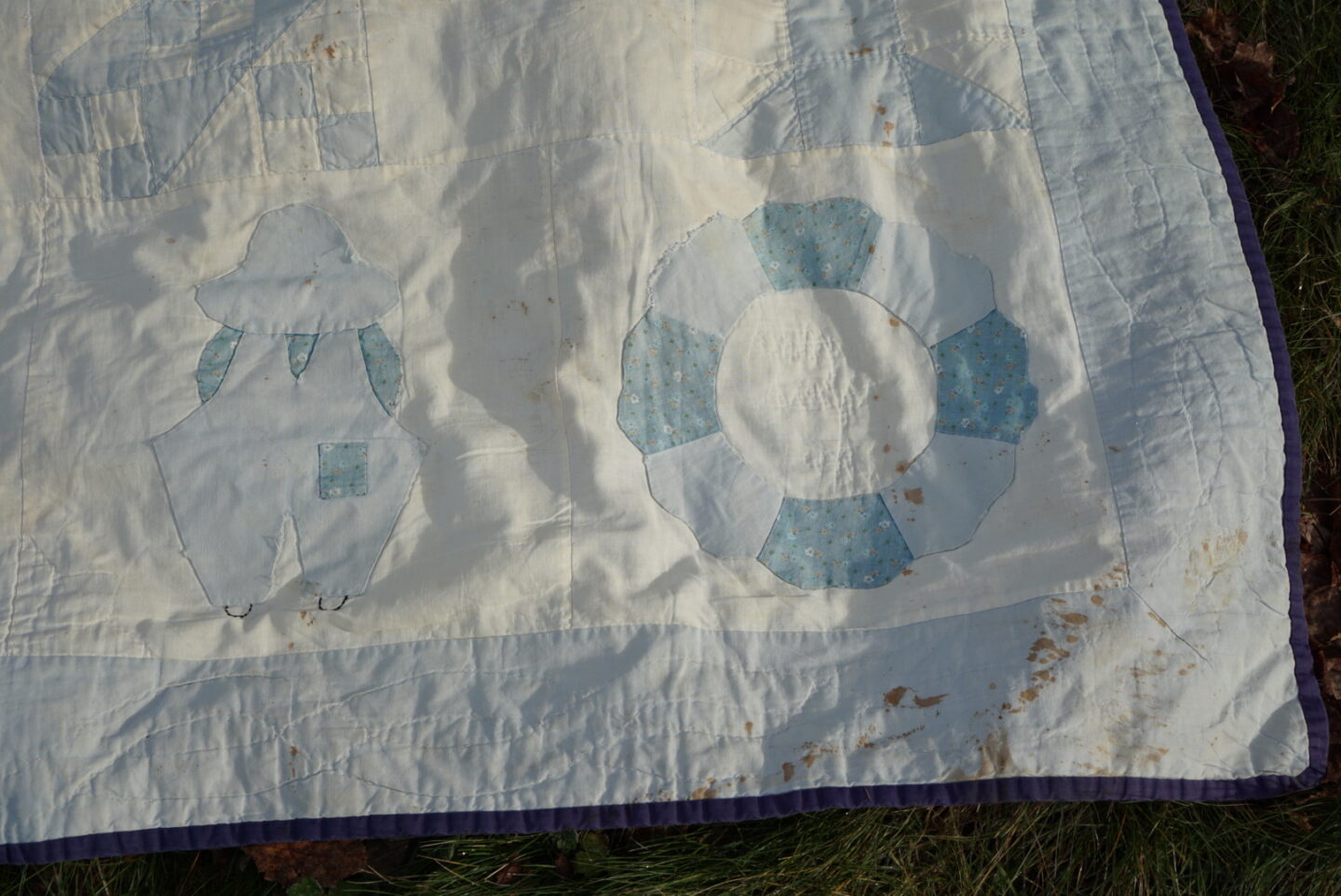
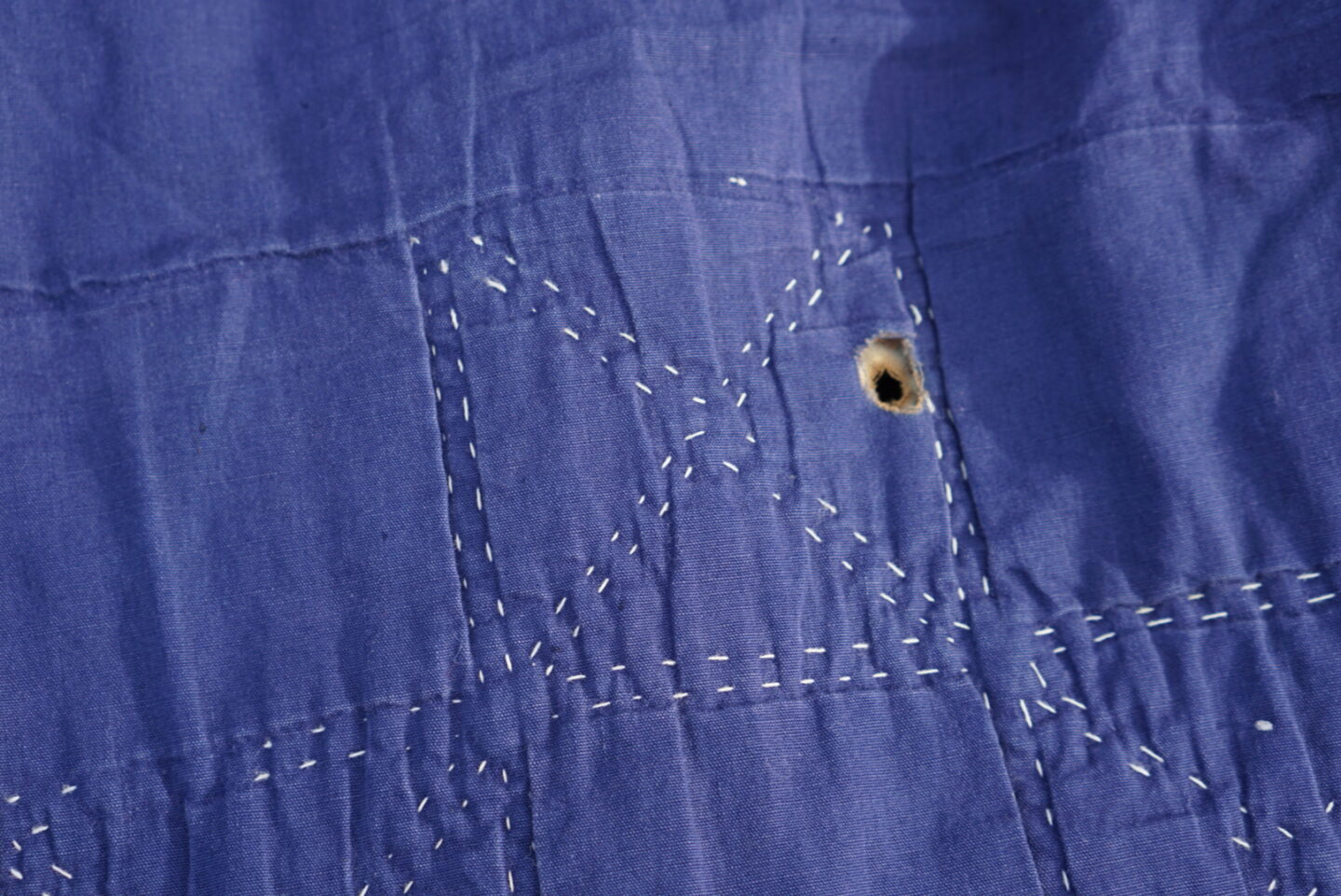


Now realizing how much time and effort my mum had put into this quilt, I wanted to make sure it didn’t completely fall apart. I did a lot of repairs to the quilt ten to twelve years ago while I was in university, although I did not have a lot of finesse. My stitching mostly serves the purpose of holding the pieces together securely as opposed to being beautiful or blending in with the original sewing at all. A lot of the appliqué pieces were completely loose, barely holding onto the fabric underneath. There were a number of seams that had let go, and there was a hole in the top of the quilt that didn’t pass all the way through. I put a patch on that, with the same priority of function over form.
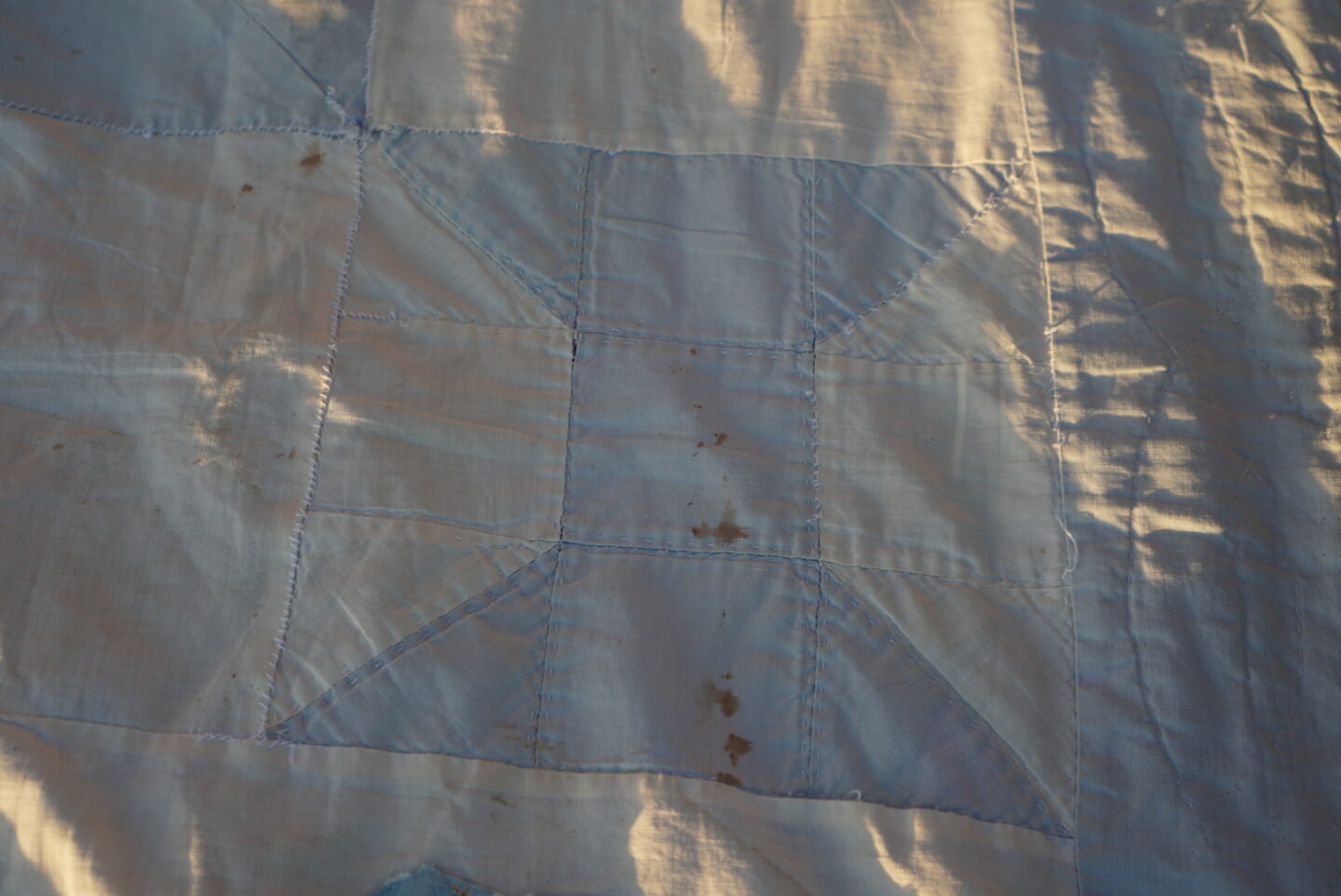
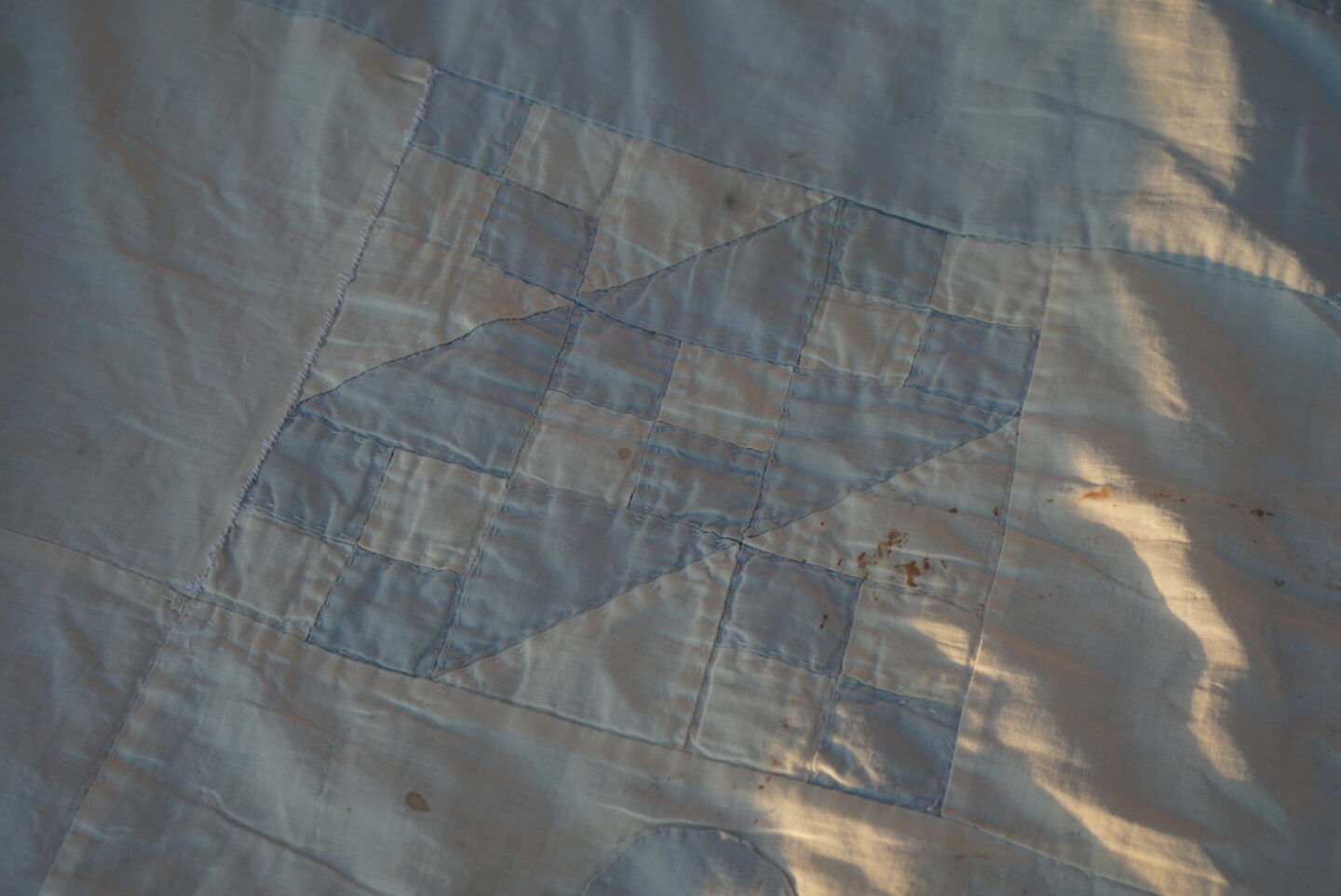
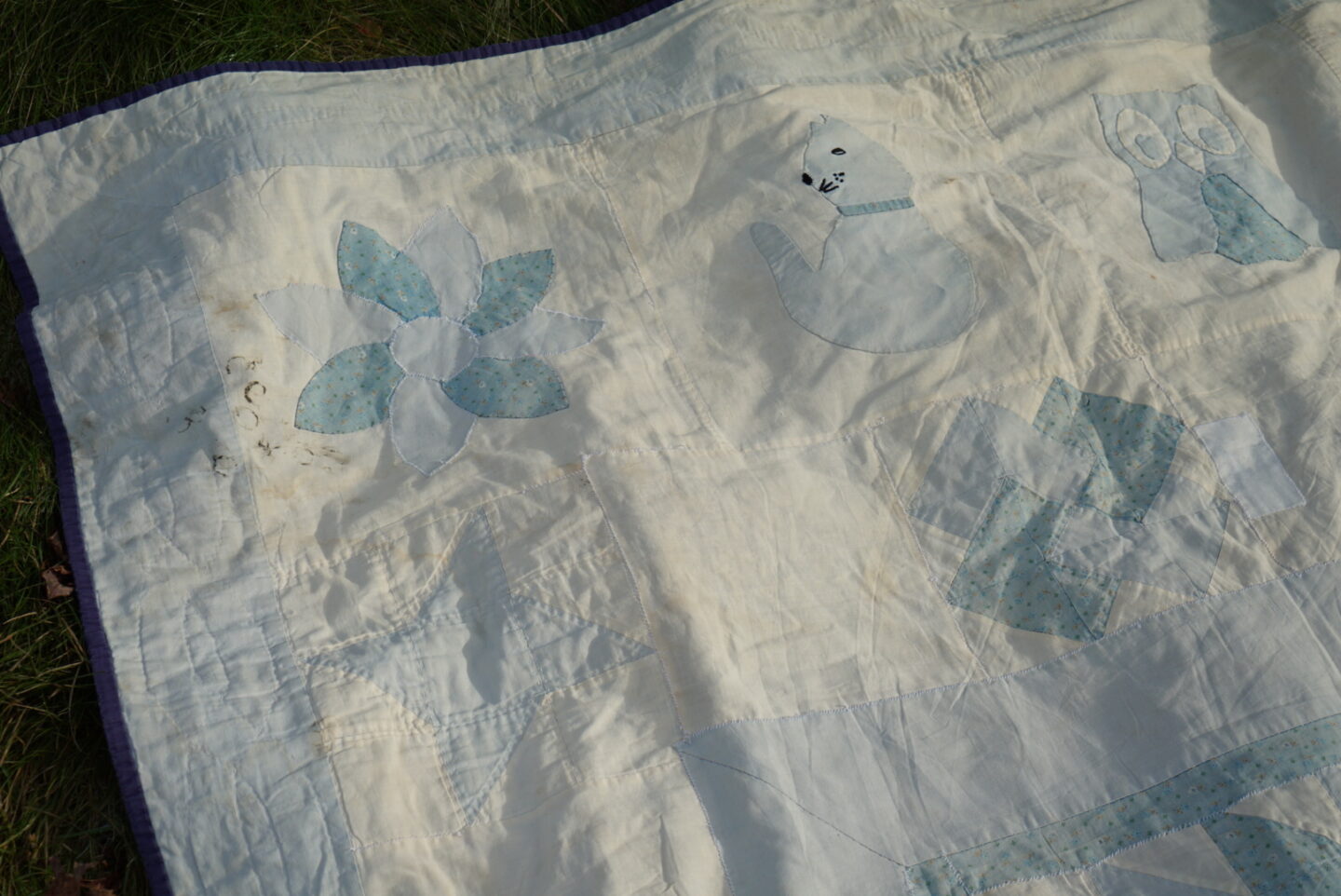
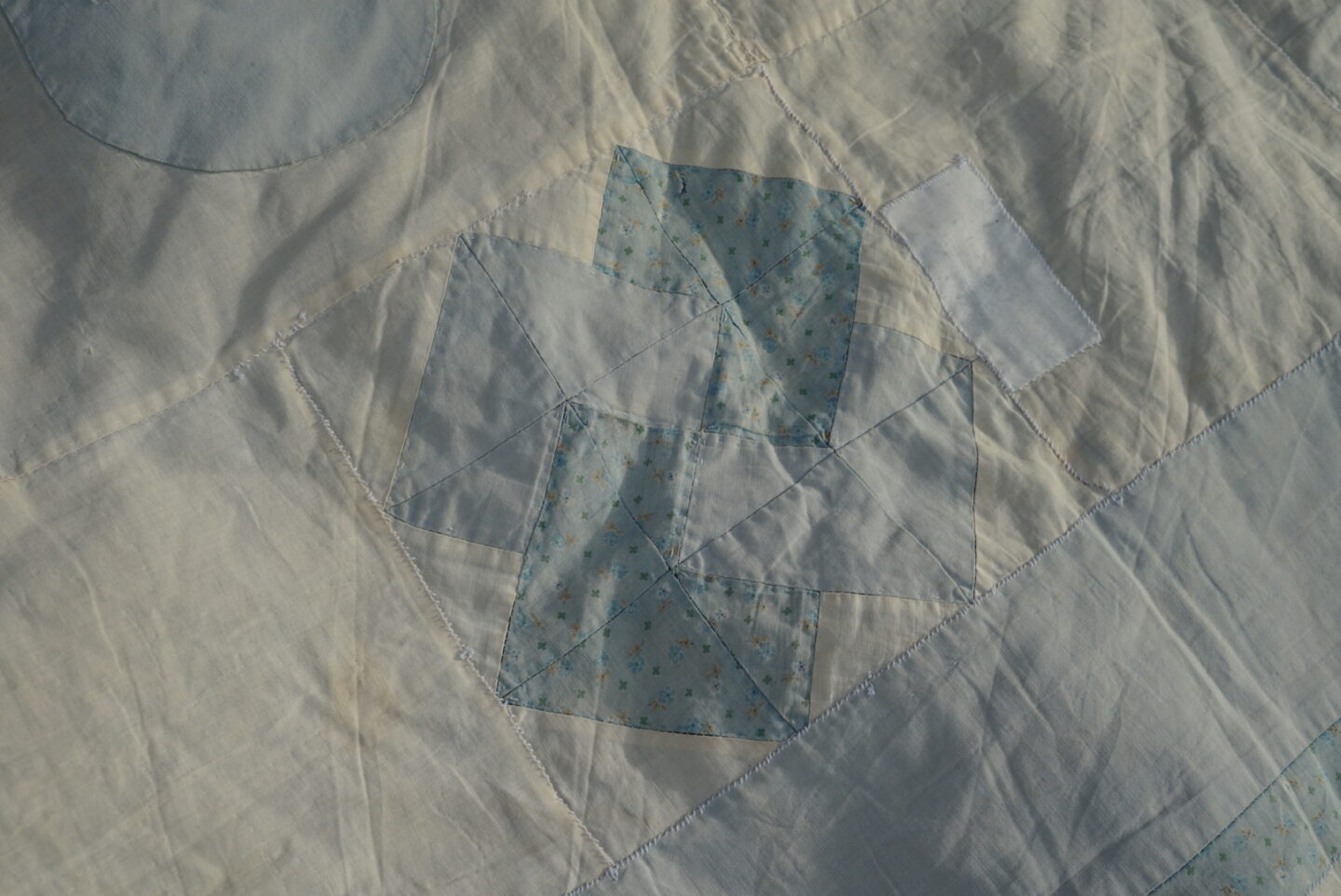





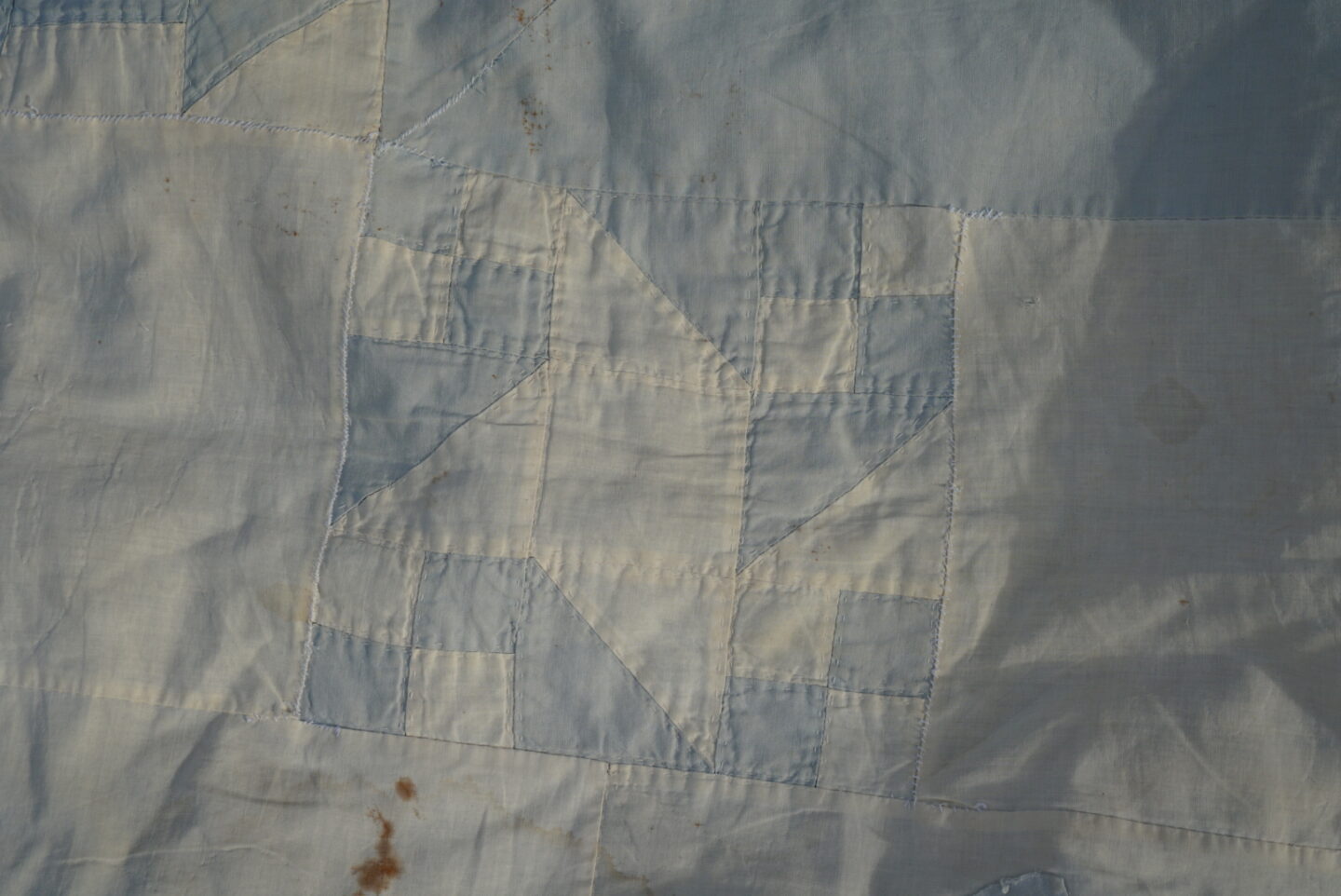

The majority of the quilting stitches had fallen out, but I’d never made a quilt and had no real understanding of how they were made, so it didn’t occur to me to redo any of the quilting. A lot of the stitching is not there anymore, but in a lot of places you can still see the imprint and needle holes from the quilting designs that were there. That quilting still has not been redone, although that’s a project I might tackle in the future.
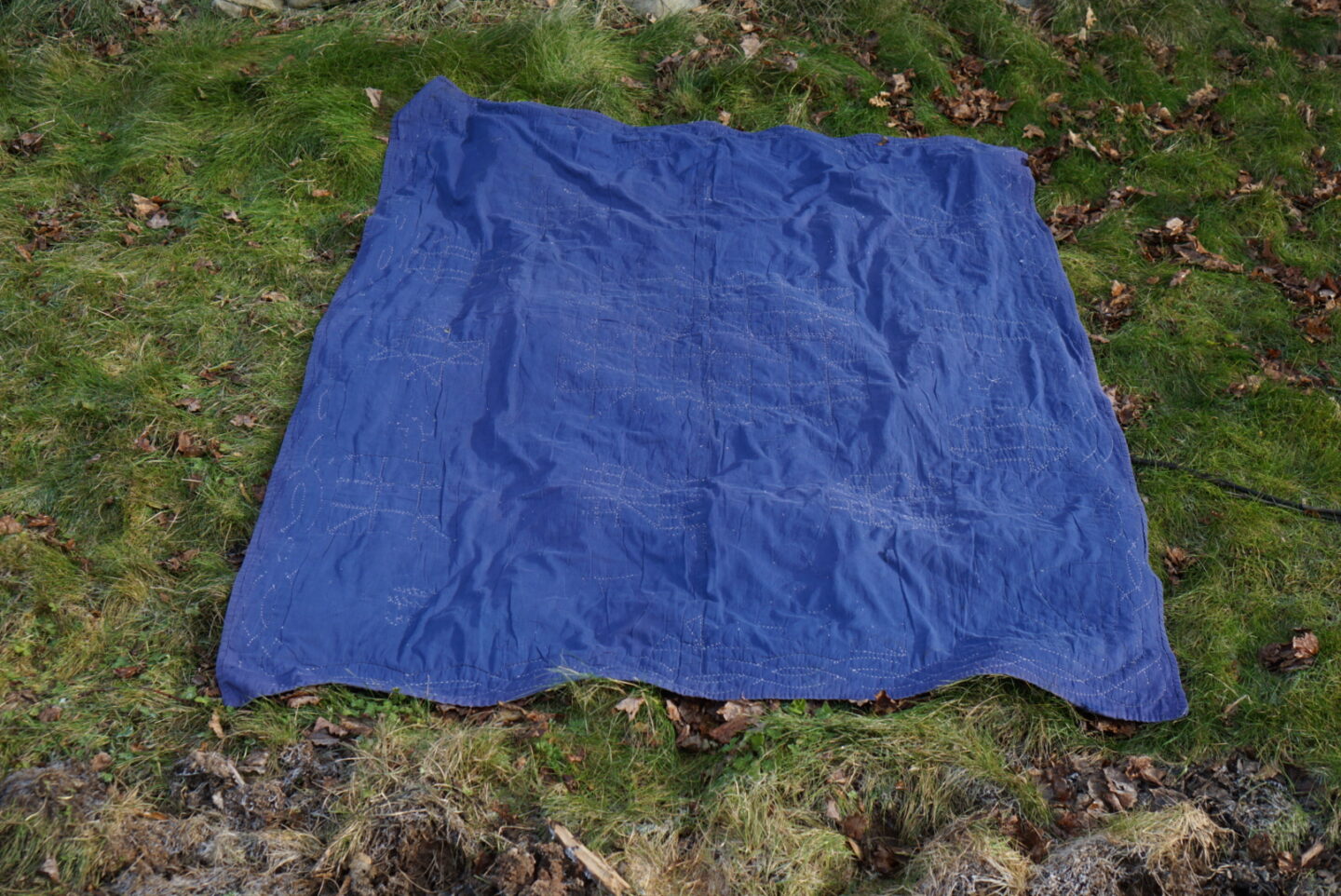
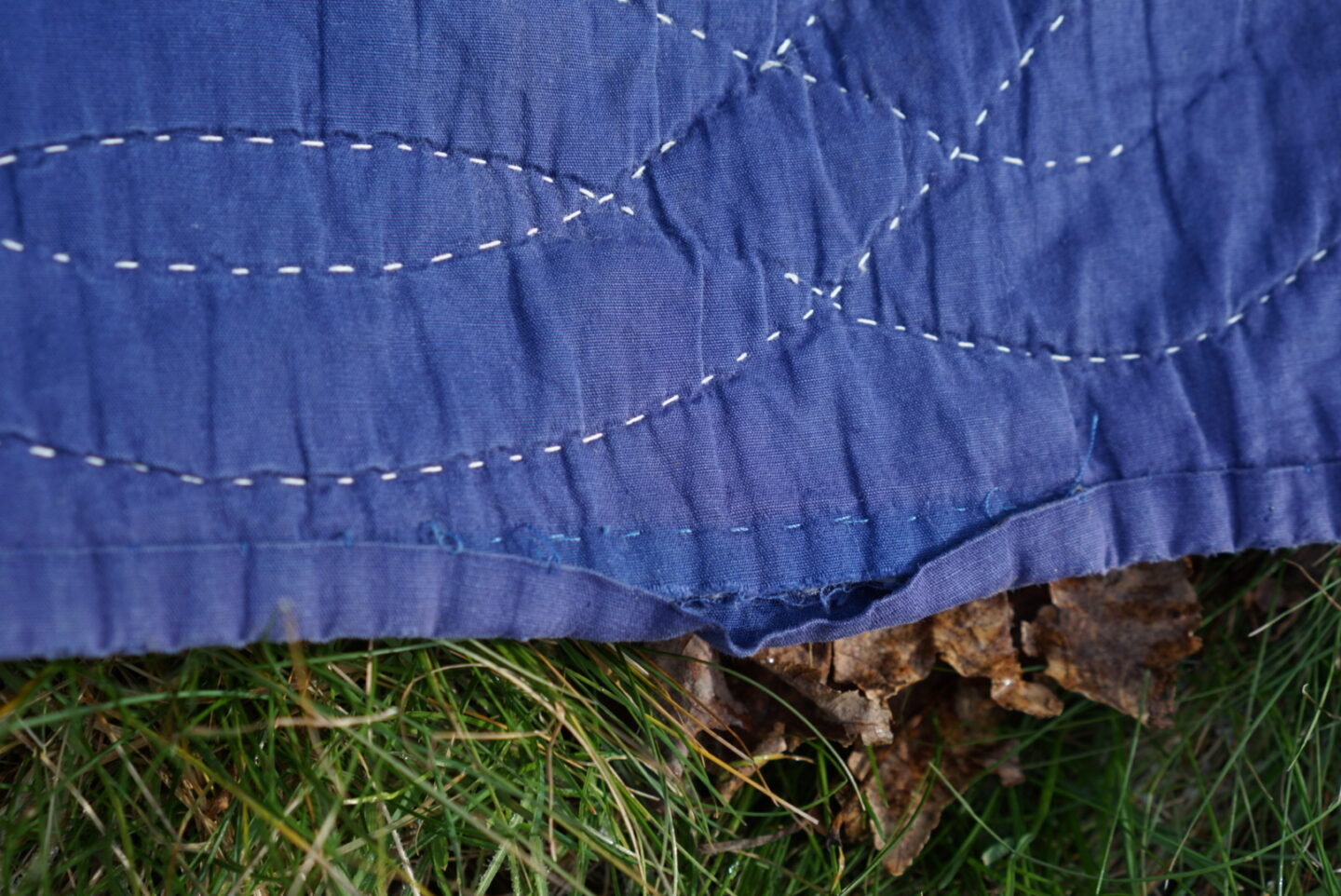

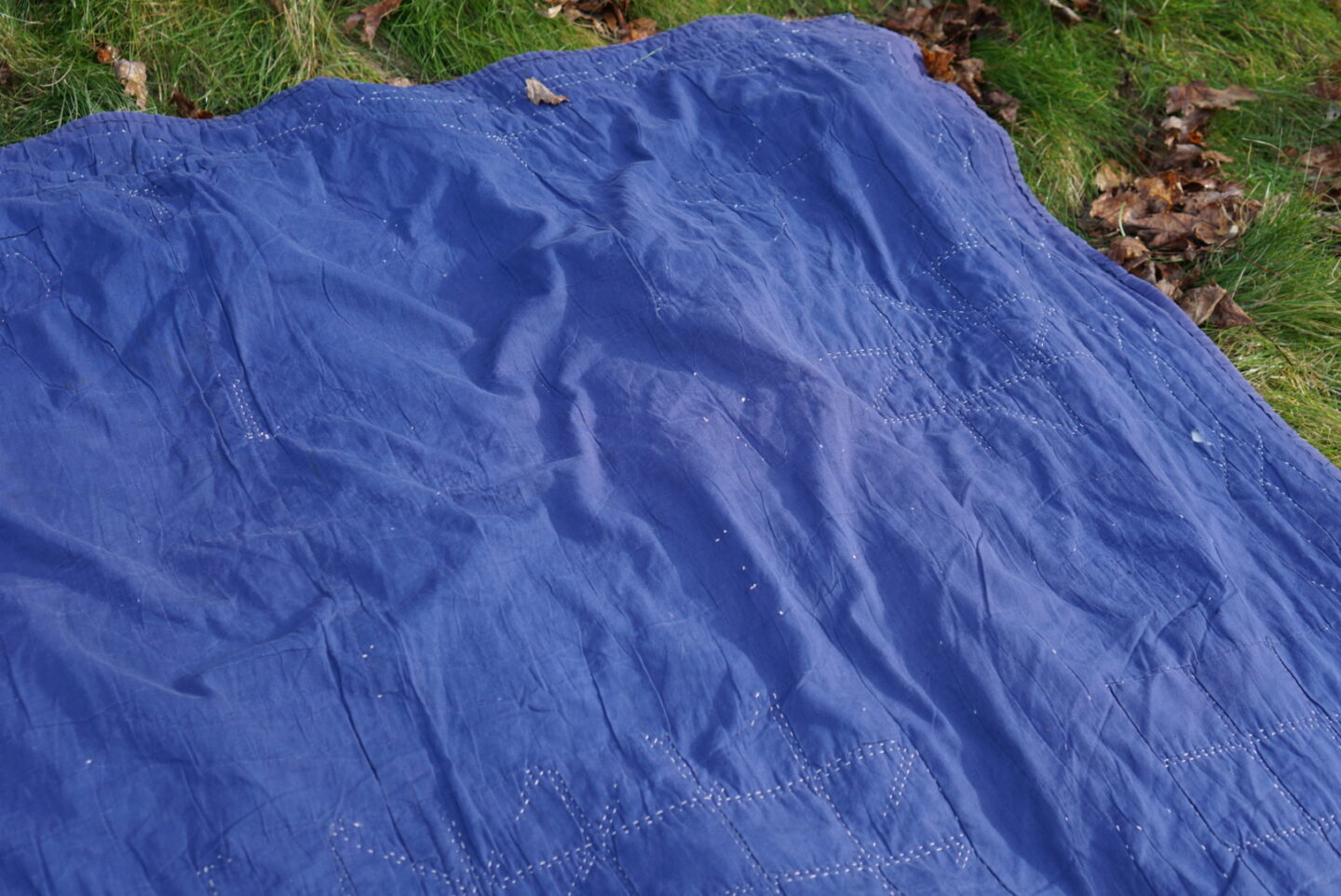


When I did the quilt repairs, all I knew was that the quilt had been made before I was born in a class that my mum took with her mother. A couple years after that, something happened that revealed that that was really only half of the story. The thing that happened was that ten years ago, my grandfather fell ill. He had been the primary caretaker for my grandma, who had Alzheimer’s. When he first became ill, my grandparents and the rest of the family went through the contents of my grandparents’ house to try to sort through everything that was there. During that process, we unearthed a finished quilt top, sandwiched with batting and backing fabric and basted by hand with long basting stitches. It looked just like my mum’s quilt, but with rust-coloured fabrics instead of blues. It was hand-pieced, just like my mum’s. But it wasn’t quilted. It had never occurred to me that my grandma had likely also made a quilt during the class she took with my mum! My grandma had finished the top, but never fully finished the quilt. She told me that if I wanted to finish it, I could have it. I enthusiastically agreed, took the quilt home, and then let it sit untouched for 8 years. My grandma passed away a few years ago, which is the one thing that makes me sad: that she never got to see her quilt fully finished.
A couple years ago, I got the motivation to start quilting it. I used regular all-purpose polyester thread, folded double. I finished the full center square, and felt very proud of myself. I was on my way! But then I noticed that the batting was that thin, polyester batting. Which is not my favourite to begin with, but the batting in this quilt had now been aged for almost 40 years! I knew in my heart that I didn’t want to put in hours and hours of work on something that was already disintegrating on the inside. So I ripped out all of those stitches. I pulled the layers of the quilt apart, got rid of the polyester batting, replaced it with cotton batting, and pin-basted the whole thing. And then I let it sit in timeout for another two years. Until this past spring, 9-10 months ago, when I thought it would be nice to finish it and give it to my mother for her birthday in the summer. Which was a total fantasy because I was not even remotely close to done by the time her birthday came around. So I decided it would be a Christmas gift instead. And I did meet that goal! A decade after I first took possession of my grandma’s quilt, 40 years after it was first pieced, I finished it. In my next few blog posts, I’ll tell you all about the quilting process, how I ended up cleaning it to get rid of dye bleeding, and show you the finished quilt!
For now, let’s appreciate the quilt that was a fixture of my childhood, a staple of my university days, a quilt that is on the blanket shelf in my apartment right now, the quilt with impossibly soft and worn fabric, the one my mother made in 1982. She was never precious about it, which strikes me even more now that I have more firsthand experience with the amount of work that went into it. I appreciate that the quilt has lived such a good life already, and continues to live on both in all of my childhood memories, as well as in the present in my home today.
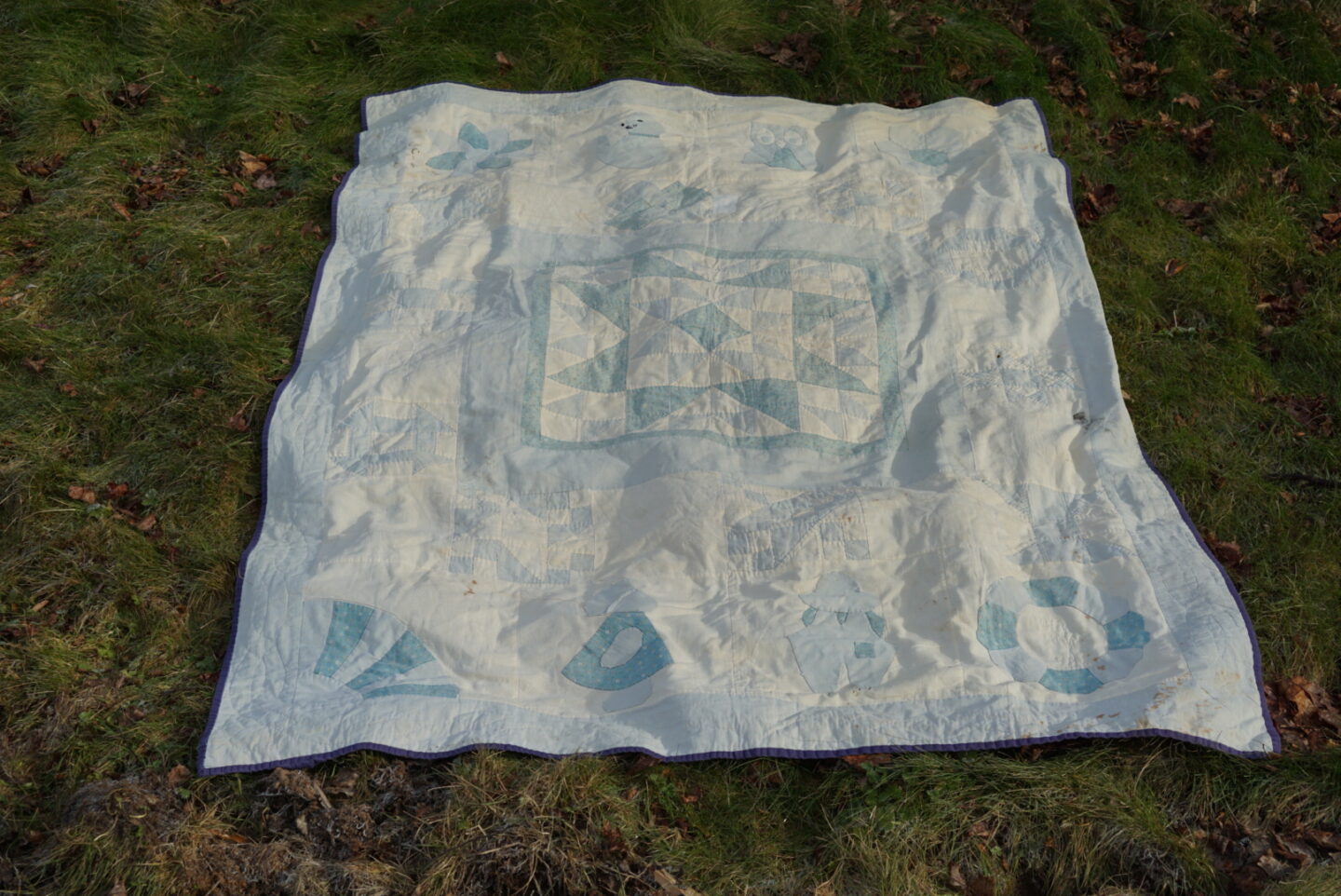

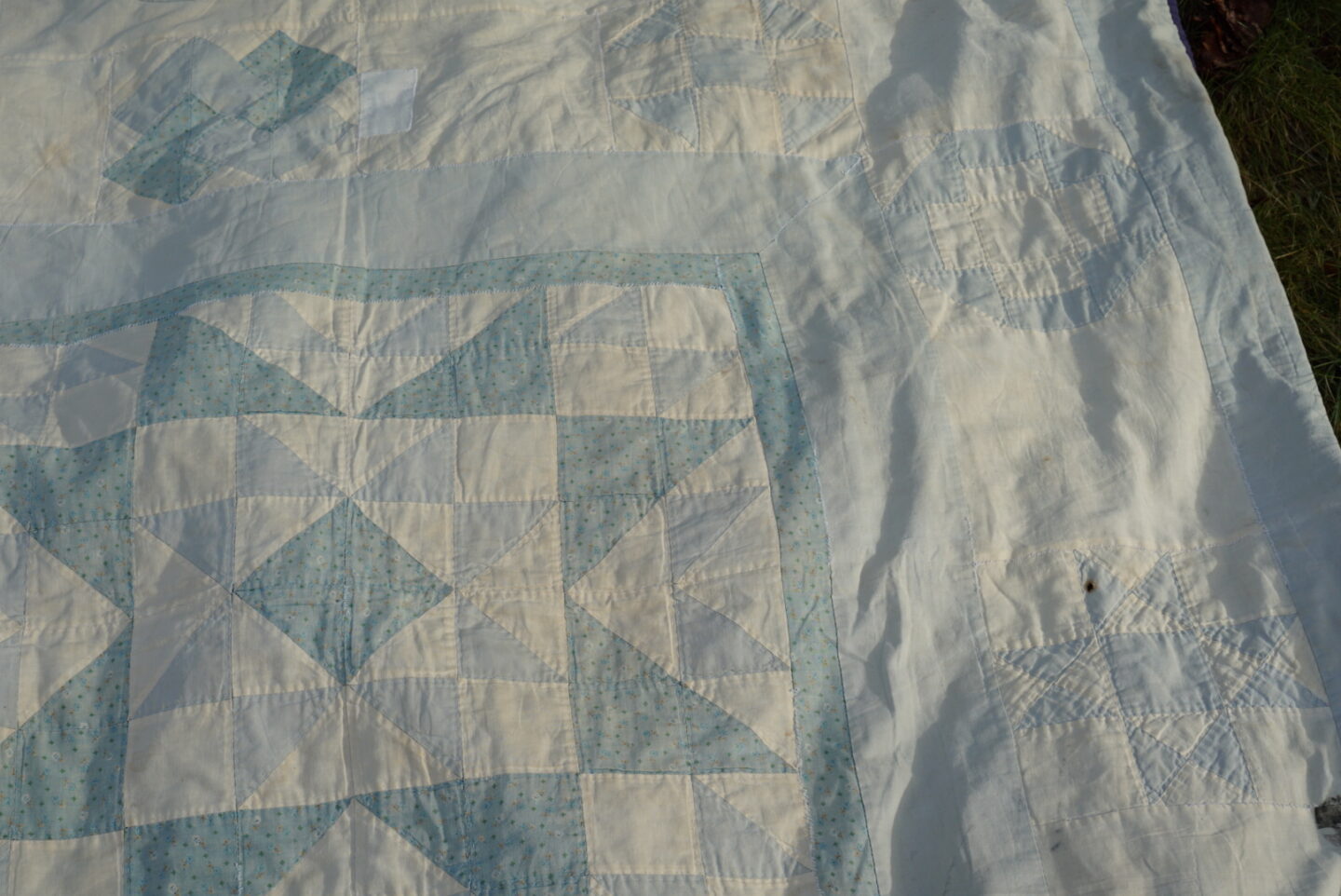
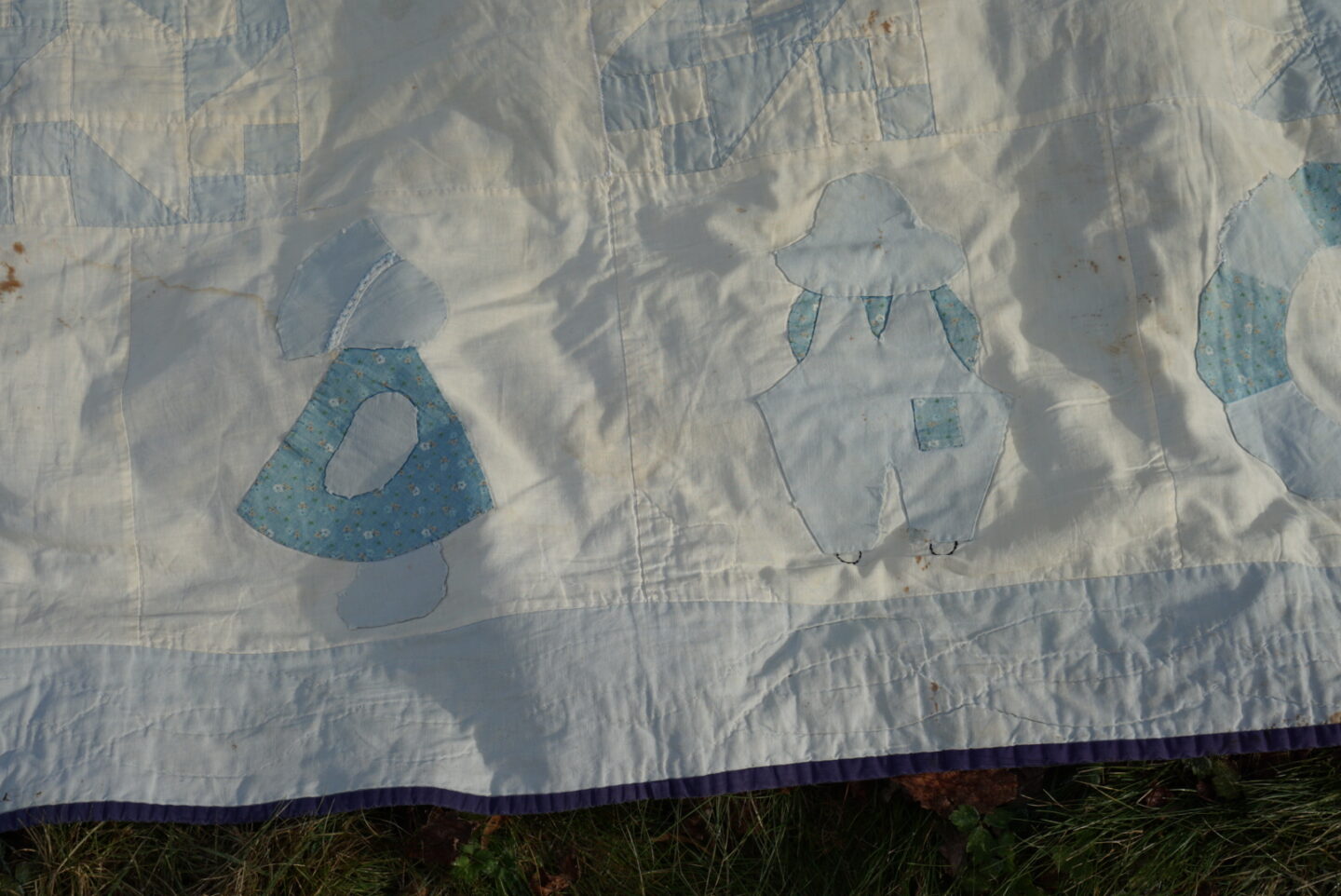
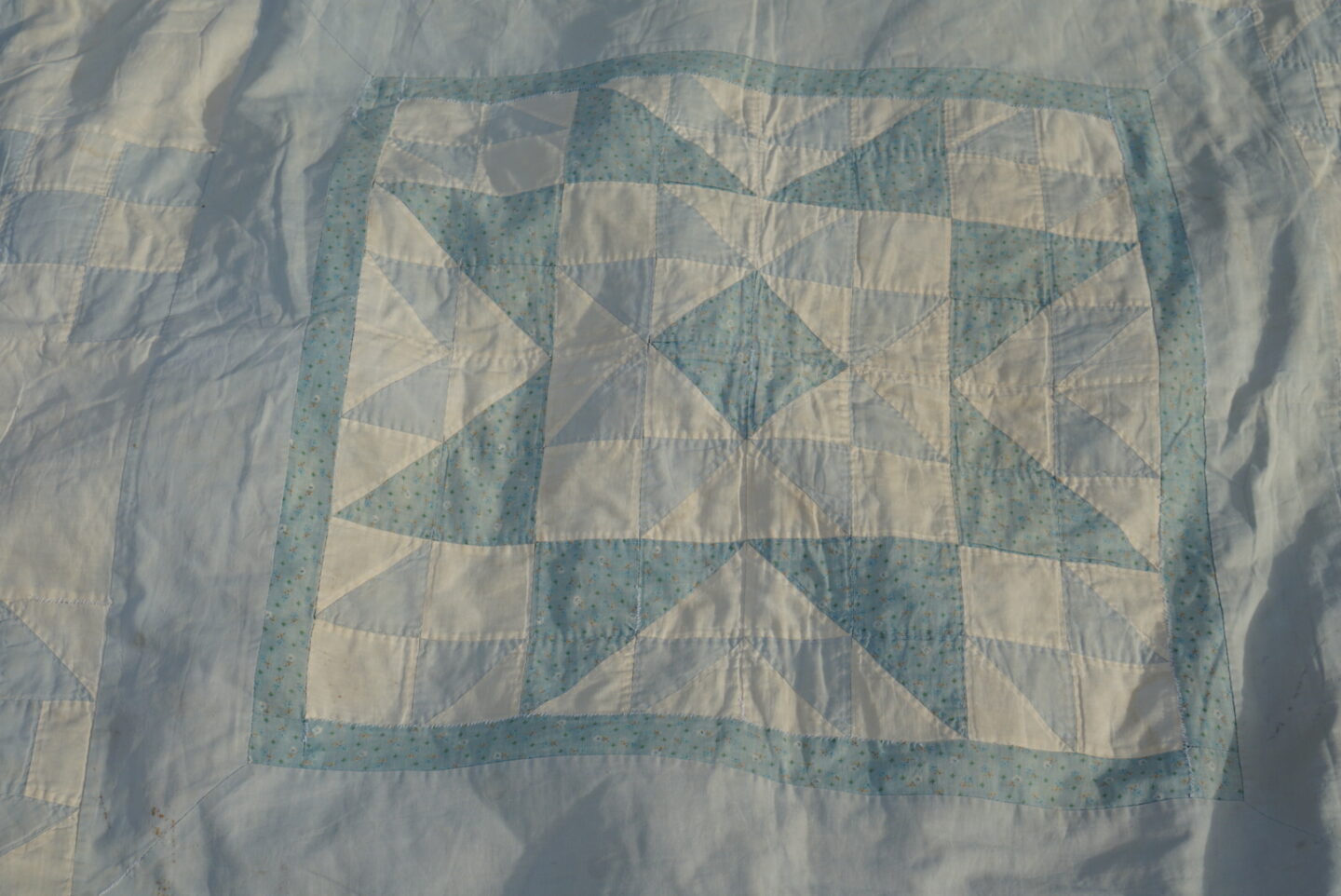




I asked my mum if she would write a little bit about the class and the quilt, and she agreed. I thought it would be fitting to finish this post about the quilt she made with her words. (Yes, reading it makes me teary!) I’ll be back in a few days with the next part of the story, and your first glimpse at the sister quilt of the one in this post.
“My mom was sweet, kind and generous. She took good care of all those she loved and in return
we adored her. But in my teenage and young adult years, Mom and I didn’t do many activities
together. We had very different interests at that stage of my life. However, one year while I
was in university, the two of us took a year-long quilting course. I had no classes on Thursday,
so I think it was me who suggested that we sign up to take the course together in Woodside.
With supplies list in hand, we set off to the “Cotton Patch” to choose our fabrics. I selected
shades of blue and mom chose shades of rust. Each Thursday morning, off we’d go to the
course to work on our quilts and as the year progressed, our quilts came together. It’s one of
my favourite memories of time spent with my mom. Easy conversation around a large table
with many laughs when things didn’t go quite as planned. As the quilting course ended, my
quilt was finished. The top of mom’s quilt was completed, but she never got around to finishing
it. In hindsight, I realize that she likely wouldn’t have chosen a quilting course for herself; only
as I get older and reflect back on that year, do I realize that she said yes to the course because
she wanted the two of us to spend time together. Then many, many years later, Megan comes
along to finish what Mom started. Now I have my mom’s beautiful completed quilt with both
Mom’s and Megan’s stitching to remind me of the love of a mother for her daughter and a
daughter’s love for her mother – full circle.”
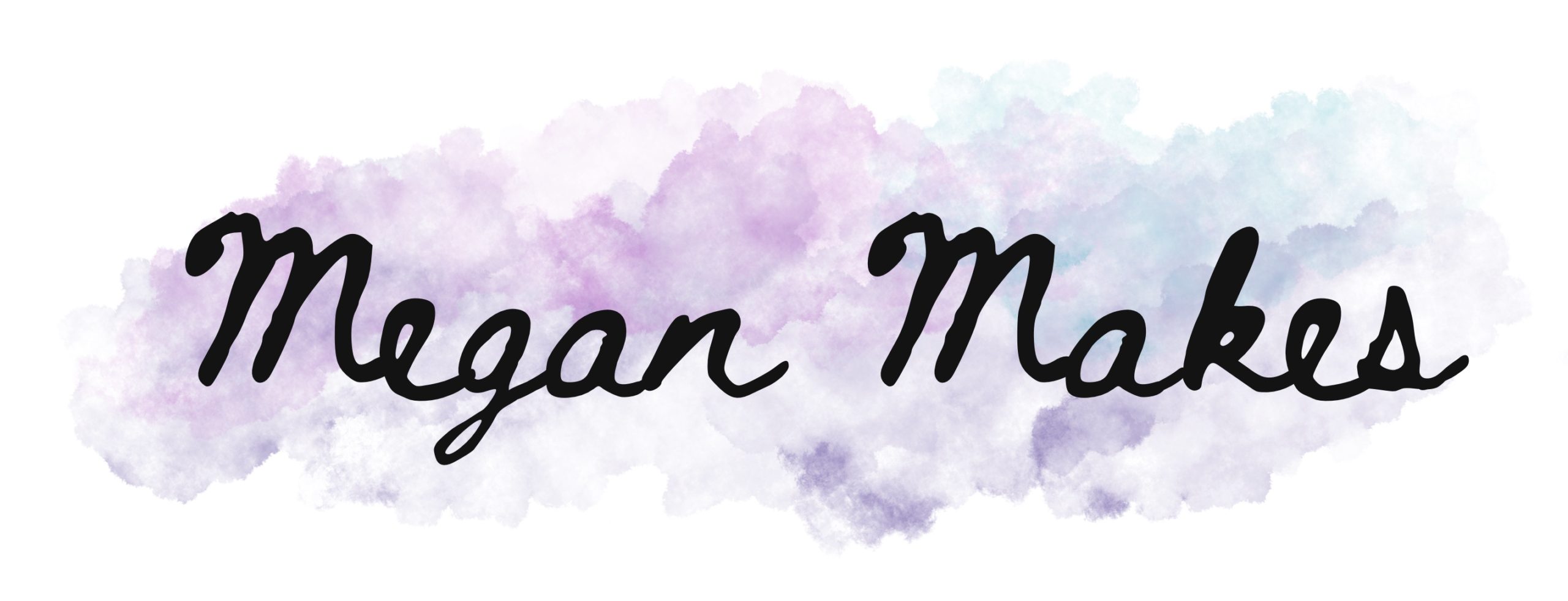
This was so incredibly beautiful to read. Having spent a good chunk of my childhood amongst your clan, I felt entirely touched by the story and the journey of this quilt. Thank you for sharing!
Author
Thank you, Maddie! You are the sweetest! 🙂